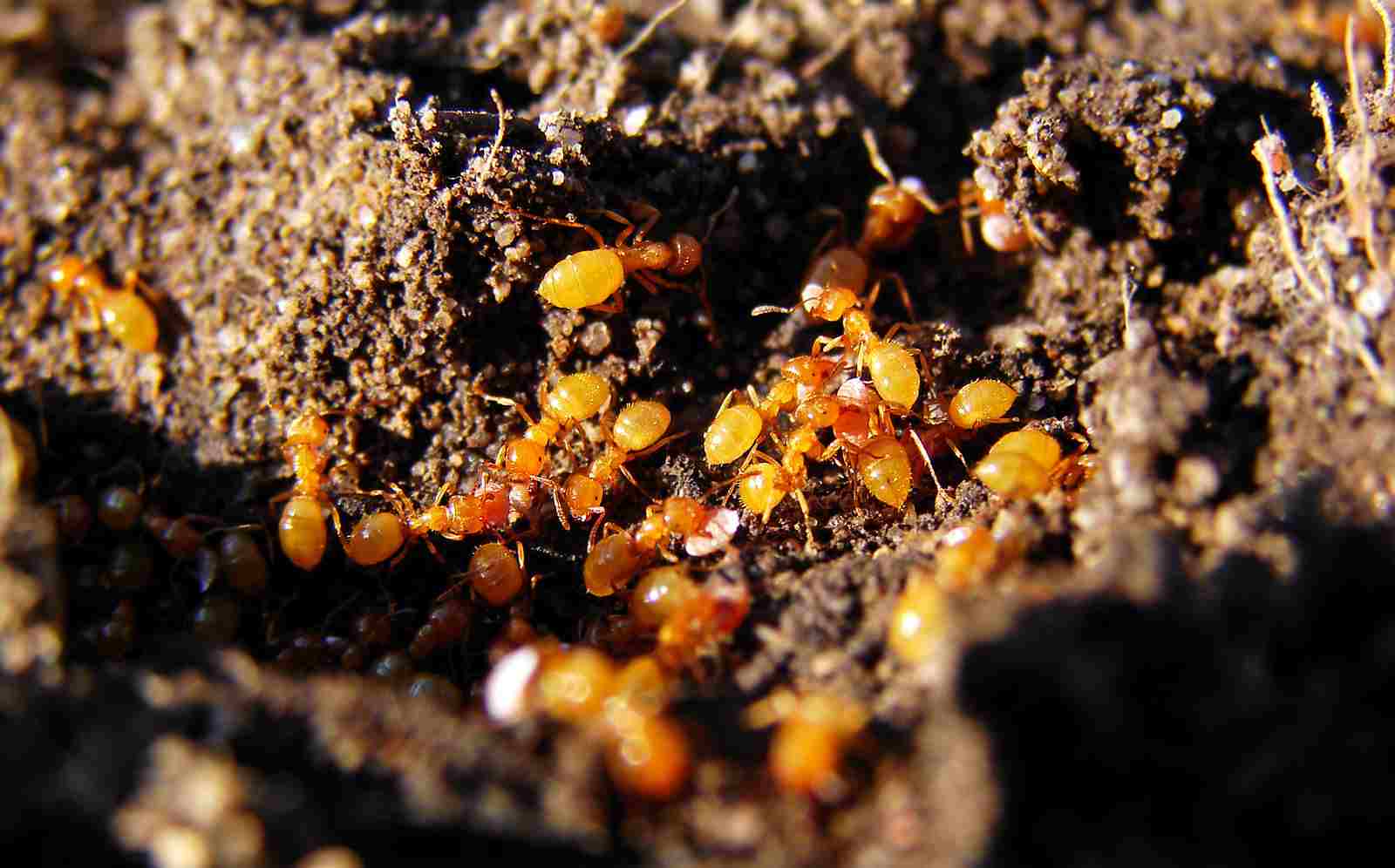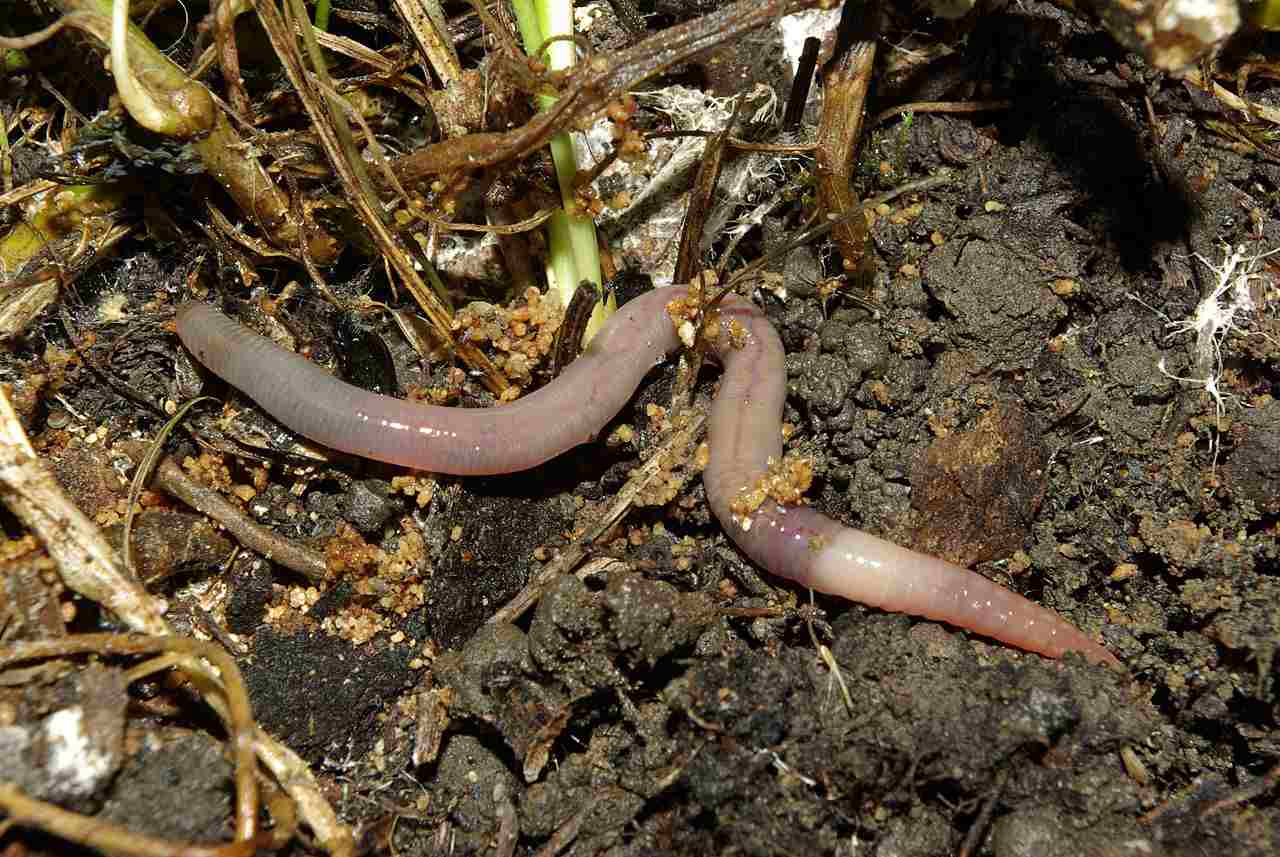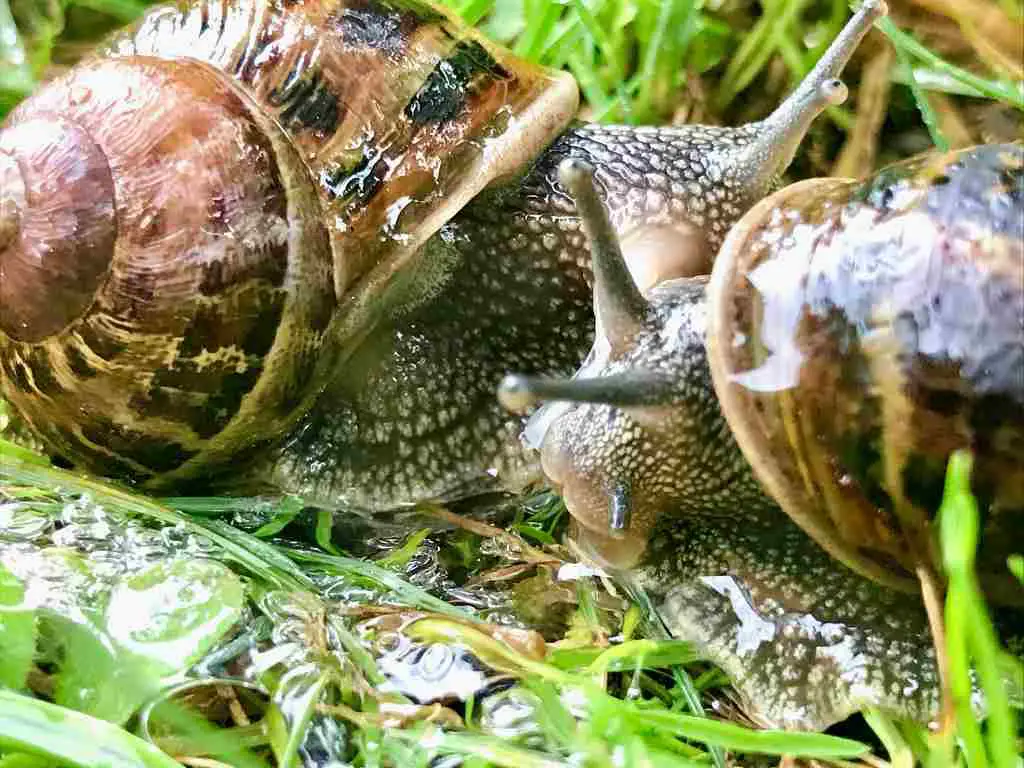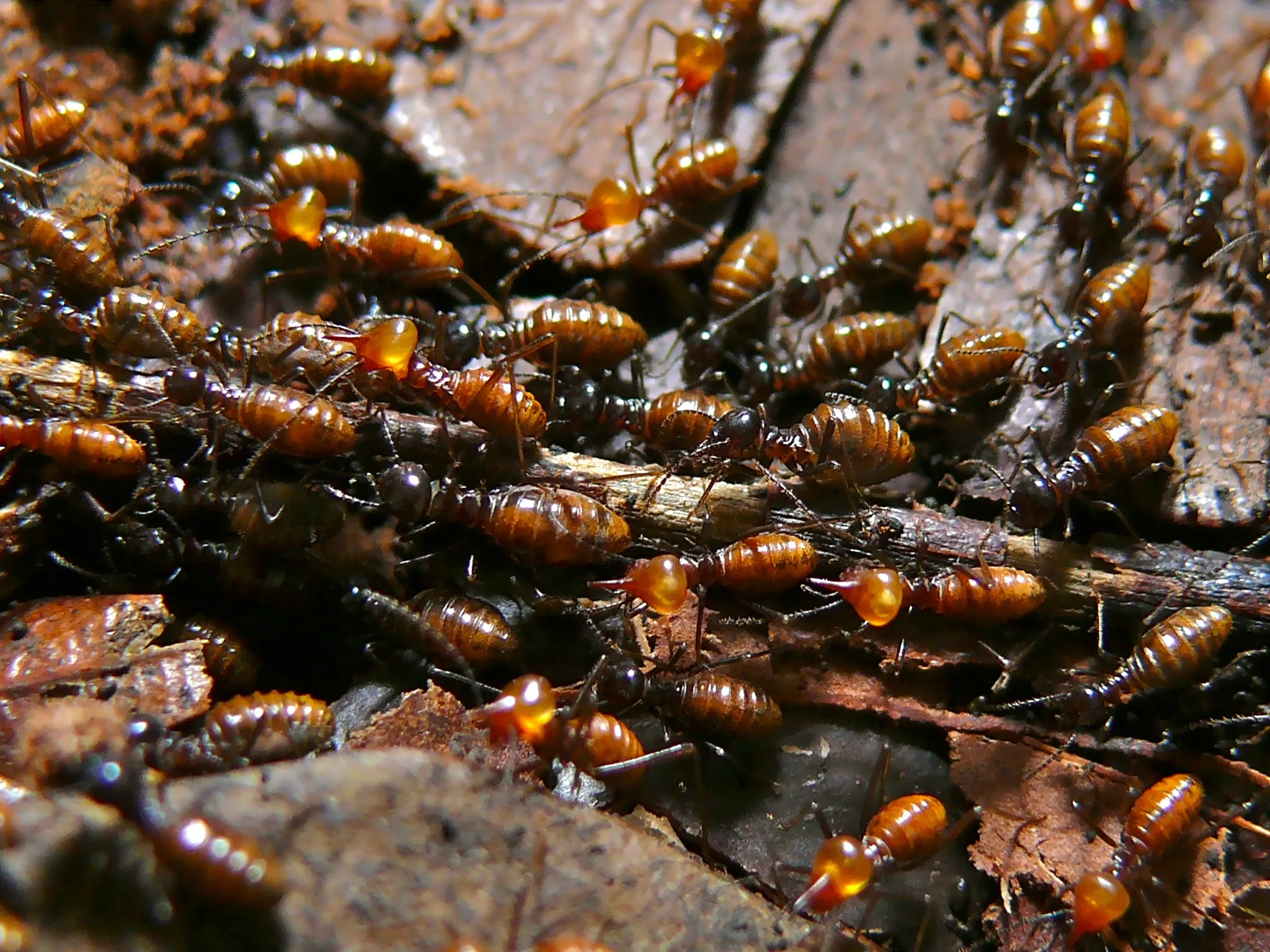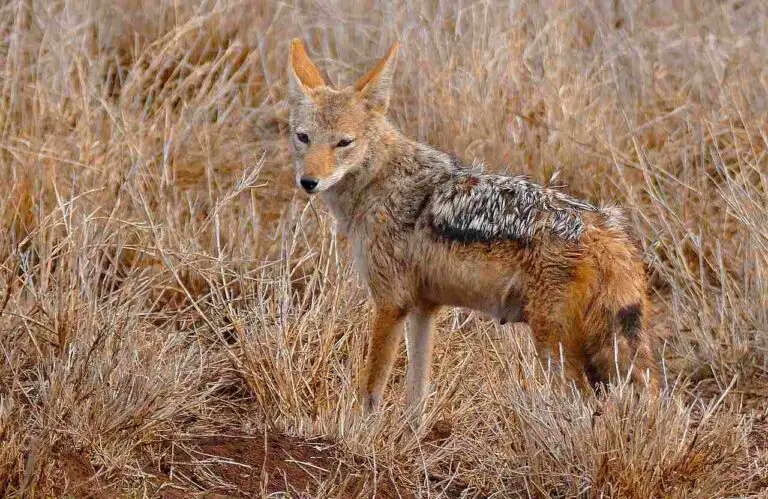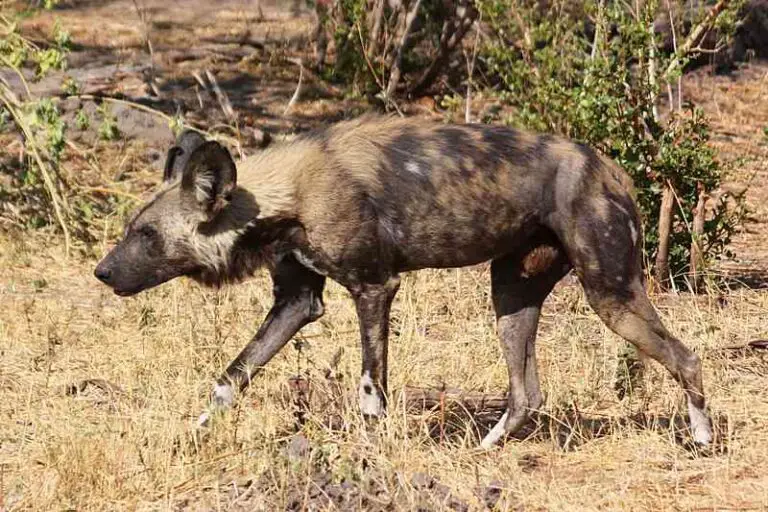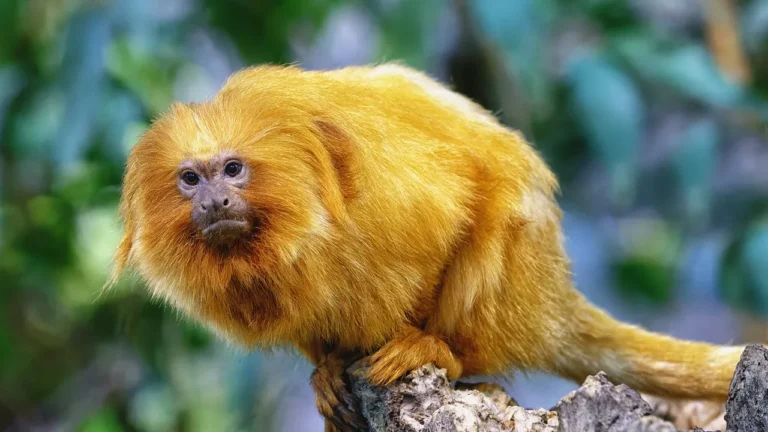15+ Detritivores In Temperate Grasslands Discussed
Examples of detritivores in temperate grasslands are earthworms, dung beetles, and millipedes, which play crucial roles in nutrient recycling and soil aeration. These detritivores help break down organic matter, returning nutrients to the soil and improving soil structure through their tunneling and feeding activities. This process supports plant growth and contributes to the sustainability and health of the entire grassland ecosystem. Other key detritivores include pill bugs, termites, ants, mites, and various beetle species, each playing a specific role in maintaining the ecosystem’s balance and productivity.
1. Earthworms
Earthworms are vital detritivores in temperate grasslands, contributing significantly to soil health and structure. These segmented invertebrates break down organic matter, such as dead plant material and leaf litter, into simpler compounds through their feeding and digestion processes. As they burrow through the soil, they aerate and loosen the ground, promoting better water infiltration and nutrient cycling. This bioturbation is essential for maintaining soil fertility, as it enables the deeper integration of organic material and nutrients into the soil profile. Moreover, earthworms’ castings (waste material) are rich in essential nutrients like nitrogen, phosphorus, and potassium, serving as a natural fertilizer for surrounding plant life.
The presence of earthworms in temperate grasslands can also enhance plant growth and root development. By creating channels through the soil, earthworms facilitate root expansion and access to water and nutrients. Additionally, their activities can increase soil microbial activity, further enriching the soil ecosystem. Earthworms’ contributions to soil health extend beyond their direct interactions with soil and organic matter—they also support a wide range of other organisms in the ecosystem, providing a stable environment conducive to diverse plant and animal life. Overall, earthworms play a critical role in maintaining the balance and sustainability of temperate grassland ecosystems.
2. Dung Beetles
Dung beetles are key detritivores in temperate grasslands, known for their role in breaking down and recycling animal waste. These insects specialize in feeding on animal dung, which they often roll into balls and bury underground. This behavior has a significant impact on the ecosystem as it helps to recycle nutrients back into the soil, promoting plant growth and reducing the presence of harmful parasites and pathogens in the environment. Dung beetles also help to control flies and other pests that breed in dung by removing their breeding sites, contributing to a healthier grassland ecosystem.
In addition to recycling nutrients, dung beetles’ activities also promote soil aeration and structure. As they bury dung balls, they create tunnels in the soil, which enhance water infiltration and root penetration. This process aids in maintaining soil fertility and structure, providing a stable environment for plant life. Dung beetles’ work also helps to improve soil microbial activity by integrating organic matter into the soil, thus supporting a broader range of organisms in the temperate grassland ecosystem.
3. Millipedes
Millipedes play an important role in temperate grasslands as detritivores, primarily feeding on decaying plant material like fallen leaves and wood. Their consumption of dead organic matter accelerates the decomposition process, returning essential nutrients to the soil. As millipedes move through the soil and leaf litter, they help to break down large pieces of organic matter into smaller fragments, making it easier for microbes to further decompose these materials. This activity is crucial for maintaining soil fertility and supporting the growth of plants in temperate grasslands.
The activity of millipedes also promotes soil structure and aeration. As they burrow through the soil, they create small tunnels that allow air and water to penetrate deeper into the ground. This can improve root growth and soil health over time, contributing to a more stable and productive grassland ecosystem. Additionally, millipedes contribute to the nutrient cycle, as their waste material contains essential nutrients that enrich the soil. By decomposing organic matter and improving soil structure, millipedes play a vital role in maintaining the balance and productivity of temperate grasslands.
4. Pill Bugs (Isopods)
Pill bugs, also known as isopods, are important detritivores in temperate grasslands. These small crustaceans are often found in moist environments where they feed on decaying plant material, such as dead leaves and wood. By consuming this organic matter, pill bugs contribute to the decomposition process and help recycle nutrients back into the soil. This activity is crucial for maintaining soil fertility and promoting plant growth, as it provides a steady source of nutrients for the grassland ecosystem.
Pill bugs also play a role in maintaining soil structure. As they move through the soil and leaf litter, they help to break down larger pieces of organic material into smaller fragments, promoting further decomposition by soil microbes. This activity also improves soil aeration, allowing roots to penetrate more easily and water to infiltrate the soil. By contributing to nutrient cycling and soil structure, pill bugs support a diverse range of plant and animal life in temperate grasslands, playing a vital role in the health and sustainability of these ecosystems.
5. Springtails (Collembola)
Springtails, or Collembola, are tiny but highly abundant detritivores in temperate grasslands, playing a key role in the decomposition process. These small invertebrates primarily feed on decaying organic matter, such as dead plant material, fungi, and algae. By breaking down this organic matter, springtails contribute to the recycling of nutrients in the soil, supporting plant growth and overall ecosystem health. Their activities help to accelerate the decomposition process, allowing essential nutrients like nitrogen and phosphorus to be released into the soil.
Springtails also contribute to soil structure and aeration in temperate grasslands. As they move through the soil, they create small tunnels that enhance air and water infiltration. This activity not only promotes root growth but also supports a diverse microbial community that further aids in decomposition. Additionally, springtails serve as a food source for other soil-dwelling organisms, making them a crucial component of the grassland food web. Overall, springtails’ role in nutrient cycling and soil structure is vital for the sustainability and health of temperate grasslands.
6. Sowbugs
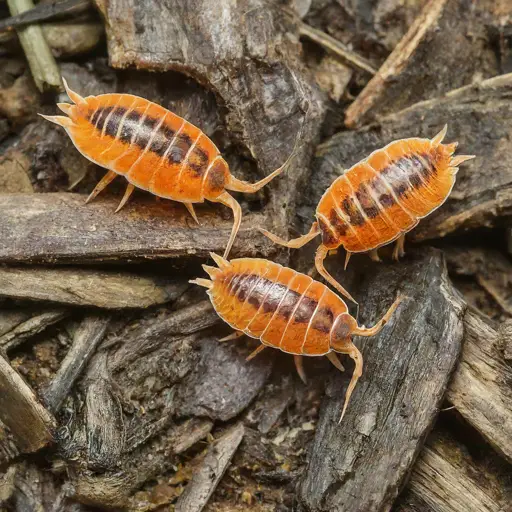
Sowbugs are closely related to pill bugs and play a similar role in temperate grasslands as detritivores. These small crustaceans feed on decaying organic matter, such as dead leaves, wood, and plant debris. By consuming this material, they help to break it down into smaller fragments, facilitating the decomposition process and contributing to the recycling of nutrients back into the soil. This nutrient cycling is essential for maintaining soil fertility and promoting plant growth in grassland ecosystems.
Sowbugs also contribute to soil structure by creating tunnels as they move through the soil and leaf litter. This activity enhances soil aeration and water infiltration, which is beneficial for root growth and the overall health of the grassland ecosystem. Additionally, sowbugs can help to control the accumulation of decaying organic matter, preventing the buildup of thick layers of leaf litter and other debris that could hinder plant growth. By supporting nutrient cycling and improving soil structure, sowbugs play a crucial role in maintaining the balance and sustainability of temperate grasslands.
7. Termites
Termites are well-known detritivores that play an essential role in the decomposition process in temperate grasslands. These insects primarily feed on cellulose, a complex carbohydrate found in plant cell walls, such as in dead wood and plant matter. Termites’ ability to break down cellulose into simpler compounds contributes significantly to nutrient recycling in grassland ecosystems. By consuming and decomposing dead wood and other plant material, termites help return essential nutrients to the soil, promoting plant growth and overall soil health.
Termites’ tunneling behavior also benefits soil structure and aeration. As they create intricate networks of tunnels in the soil, they enhance air and water infiltration, supporting root growth and microbial activity. This tunneling activity can also reduce soil compaction, promoting a more stable and fertile environment for plants. Additionally, termites play a role in supporting other organisms in the ecosystem by providing a source of food for predators and creating habitats for other soil-dwelling species. Overall, termites’ contributions to nutrient cycling and soil structure make them invaluable to the health and sustainability of temperate grasslands.
8. Ants (Certain Species)
Certain species of ants are important detritivores in temperate grasslands, playing a crucial role in nutrient recycling and soil structure. These ants feed on various organic materials, including dead insects, plant matter, and other decaying debris. By consuming this organic matter, ants contribute to the decomposition process and help recycle nutrients back into the soil, promoting plant growth and overall ecosystem health. Some ants also engage in farming behavior with aphids or other insects, indirectly supporting nutrient cycling through the honeydew produced by these relationships.
Ants are also known for their tunneling behavior, which has a significant impact on soil structure and aeration. As they create complex underground nests, they improve soil aeration and water infiltration, benefiting root growth and microbial activity. Ants can also help to redistribute organic material within the soil, aiding in nutrient mixing and further enhancing soil fertility. Additionally, certain ant species are known to aid in seed dispersal, promoting plant diversity in temperate grasslands. By contributing to nutrient cycling, soil structure, and plant diversity, ants play a multifaceted role in maintaining the health and sustainability of grassland ecosystems.
9. Mites (Oribatida)
Oribatida mites, commonly known as oribatid mites, are significant detritivores in temperate grasslands. These tiny arthropods primarily feed on decaying organic matter, such as dead leaves, wood, and plant debris. Their feeding activity plays a critical role in breaking down this organic material into simpler components, contributing to nutrient recycling and supporting plant growth in the grassland ecosystem. Oribatid mites are often among the most abundant soil-dwelling organisms, and their presence indicates a healthy and active soil ecosystem.
The activity of oribatid mites also promotes soil structure and aeration. As they move through the soil and leaf litter, they create small channels that improve air and water infiltration. This process aids in the decomposition of organic matter and enhances root growth. Additionally, oribatid mites serve as a food source for other soil-dwelling organisms, contributing to the complexity and diversity of the grassland food web. By supporting nutrient cycling and improving soil structure, oribatid mites play a vital role in the health and sustainability of temperate grasslands.
10. Beetles (Saprophagous Species)
Saprophagous beetles, or beetles that feed on decaying organic matter, play a key role in the nutrient cycle of temperate grasslands. These beetles consume a variety of organic materials, including dead wood, leaves, and animal remains, aiding in the decomposition process. By breaking down these materials into simpler components, saprophagous beetles contribute to nutrient recycling and soil fertility. This activity supports plant growth and promotes a healthy grassland ecosystem, as essential nutrients are returned to the soil.
In addition to nutrient cycling, saprophagous beetles contribute to soil structure and aeration through their tunneling and burrowing behavior. As they move through the soil, they create passages that enhance air and water infiltration, supporting root growth and microbial activity. This activity can also help prevent soil compaction, promoting a more stable environment for plant life. Furthermore, saprophagous beetles play a role in supporting the grassland food web by serving as a food source for predators. By contributing to nutrient cycling, soil structure, and food web complexity, saprophagous beetles play a significant role in the sustainability and health of temperate grasslands.
11. Slugs
Slugs are common detritivores in temperate grasslands, playing a role in the decomposition of organic matter and nutrient recycling. These soft-bodied mollusks primarily feed on decaying plant material, such as dead leaves and vegetation. By consuming this organic matter, slugs help break it down into smaller pieces, promoting the decomposition process and returning essential nutrients to the soil. This activity is crucial for maintaining soil fertility and supporting plant growth in grassland ecosystems.
In addition to nutrient recycling, slugs contribute to soil structure and aeration. As they move through the soil and leaf litter, they create small pathways that allow air and water to penetrate deeper into the ground. This can improve root growth and support a healthy soil ecosystem. Although slugs are sometimes considered pests due to their consumption of live plants, their role as detritivores is beneficial to the overall health of temperate grasslands. By supporting nutrient cycling and improving soil structure, slugs play a valuable role in maintaining the balance and productivity of these ecosystems.
12. Snails
Snails are important detritivores in temperate grasslands, contributing to the breakdown of decaying plant material. These gastropods consume a variety of organic matter, such as dead leaves, decomposing wood, and other plant debris. By doing so, snails play a role in recycling nutrients back into the soil, supporting plant growth and soil fertility. Their feeding activities also contribute to the decomposition process, allowing essential nutrients to be released for use by other organisms in the ecosystem.
Apart from their role in nutrient recycling, snails also help improve soil structure. As they move through the soil and leaf litter, they create small paths that promote aeration and water infiltration. This can enhance root growth and support a diverse microbial community. Although snails are sometimes seen as pests due to their consumption of live plants, their overall role in nutrient cycling and soil structure makes them valuable contributors to the temperate grassland ecosystem.
13. Spiders (Some Species, Indirectly)
Spiders, although primarily predators, can indirectly act as detritivores in temperate grasslands. Some species feed on other detritivores, and through the breakdown of their prey, they contribute to the nutrient cycle. Additionally, spiders play a role in the redistribution of organic matter when they capture prey and leave behind undigested remnants, which decompose and add nutrients to the soil. This indirect contribution to the nutrient cycle helps support the overall health of the grassland ecosystem.
Spiders also play a role in maintaining the balance of other detritivores. By preying on insects like flies and beetles, they help control their populations, preventing overconsumption of organic matter. This predatory behavior supports a more stable ecosystem and promotes biodiversity. Although spiders may not be direct detritivores, their presence in temperate grasslands contributes to the decomposition process and helps maintain ecosystem balance.
14. Crickets (Some Species)
Some species of crickets in temperate grasslands act as detritivores, feeding on decaying plant material and other organic debris. These insects help break down dead leaves, wood, and other plant matter, aiding in the decomposition process and recycling nutrients back into the soil. By consuming organic matter, crickets contribute to the overall fertility of the soil, supporting plant growth and the broader ecosystem’s health.
Crickets’ burrowing behavior also has a positive impact on soil structure and aeration. As they dig into the soil to create shelter or lay eggs, they promote air and water infiltration, which benefits root growth and soil microbial activity. This activity also helps prevent soil compaction, maintaining a more stable environment for plants and other soil-dwelling organisms. Through their role in nutrient cycling and soil structure, crickets contribute to the sustainability of temperate grasslands.
15. Flies (Saprophagous Species)
Saprophagous flies play a crucial role in temperate grasslands as detritivores. These flies, including species like houseflies and blowflies, feed on decomposing organic matter, such as animal carcasses, dung, and decaying plant material. By consuming these materials, saprophagous flies accelerate the decomposition process, contributing to the recycling of nutrients in the ecosystem. This activity is essential for maintaining soil fertility and supporting plant growth in temperate grasslands.
Flies also contribute to the broader ecosystem through their role in the food web. As they feed on decaying organic matter, they provide a food source for other organisms, such as birds and spiders. This interaction helps maintain a balanced ecosystem and promotes biodiversity. Furthermore, the activities of saprophagous flies can help control the buildup of decomposing organic matter, reducing the risk of disease spread and other potential hazards. Overall, these flies play a significant role in the health and sustainability of temperate grasslands.
16. Fungal Gnats (Larvae)
Fungal gnat larvae are important detritivores in temperate grasslands, feeding on decaying plant material and fungi. These larvae play a crucial role in breaking down organic matter, aiding in the decomposition process, and returning essential nutrients to the soil. By consuming decaying vegetation and fungi, fungal gnat larvae contribute to the recycling of nutrients, promoting soil fertility and supporting plant growth in grassland ecosystems.
The activity of fungal gnat larvae also contributes to soil structure and aeration. As they move through the soil and leaf litter, they create small tunnels that enhance air and water infiltration, benefiting root growth and microbial activity. This activity also supports a diverse range of soil organisms, contributing to the overall health of the grassland ecosystem. Through their role in nutrient cycling and soil structure, fungal gnat larvae play a vital role in the sustainability and productivity of temperate grasslands.
*Summary
-
Earthworms: Decompose organic matter, improve soil aeration and nutrient cycling.
-
Dung Beetles: Recycle animal waste, enhance soil aeration.
-
Millipedes: Break down dead plant material, improve soil structure.
-
Pill Bugs (Isopods): Decompose decaying organic matter, contribute to soil aeration.
-
Springtails (Collembola): Feed on decaying organic matter, create soil channels.
-
Sowbugs: Break down organic matter, improve soil structure.
-
Termites: Decompose cellulose, promote soil aeration.
-
Ants (Certain Species): Consume organic material, contribute to soil structure.
-
Mites (Oribatida): Decompose organic matter, support soil aeration.
-
Beetles (Saprophagous Species): Feed on decaying organic matter, promote soil fertility.
-
Slugs: Decompose plant material, support soil aeration.
-
Snails: Feed on decaying plant material, improve soil structure.
-
Spiders (Some Species, Indirectly): Redistribute organic matter, control other detritivores.
-
Crickets (Some Species): Consume decaying organic matter, support soil structure.
-
Flies (Saprophagous Species): Feed on decaying organic matter, promote nutrient recycling.
-
Fungal Gnats (Larvae): Feed on decaying plant material, create soil tunnels.
| Detritivore |
Role in Temperate Grasslands
|
| Earthworms |
Decompose organic matter, improve soil aeration
|
| Dung Beetles |
Recycle animal waste, enhance soil aeration
|
| Millipedes |
Break down dead plant material, improve soil structure
|
| Pill Bugs (Isopods) |
Decompose organic matter, contribute to soil aeration
|
| Springtails |
Feed on decaying organic matter, create soil channels
|
| Sowbugs |
Decompose organic matter, improve soil structure
|
| Termites |
Decompose cellulose, promote soil aeration
|
| Ants (Certain Species) |
Consume organic material, contribute to soil structure
|
| Mites (Oribatida) |
Decompose organic matter, support soil aeration
|
| Beetles (Saprophagous Species) |
Feed on decaying organic matter, promote soil fertility
|
| Slugs |
Decompose plant material, support soil aeration
|
| Snails |
Feed on decaying plant material, improve soil structure
|
| Spiders (Indirectly) |
Redistribute organic matter, control other detritivores
|
| Crickets (Some Species) |
Consume decaying organic matter, support soil structure
|
| Flies (Saprophagous Species) |
Feed on decaying organic matter, promote nutrient recycling
|
| Fungal Gnats (Larvae) |
Feed on decaying plant material, create soil tunnels
|
